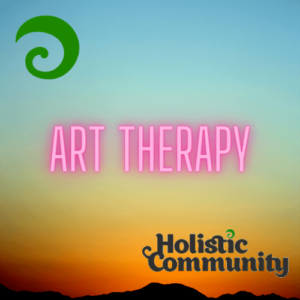 Art therapy is a form of expressive therapy that uses art materials, such as paints, chalk and markers. Art therapy combines traditional psychotherapeutic theories and techniques with an understanding of the psychological aspects of the creative process, especially the affective properties of the different art materials.
Art therapy is a form of expressive therapy that uses art materials, such as paints, chalk and markers. Art therapy combines traditional psychotherapeutic theories and techniques with an understanding of the psychological aspects of the creative process, especially the affective properties of the different art materials.
Art Therapy – A Creative Experience
Using their skills in evaluation and psychotherapy, art therapists choose materials and interventions appropriate to their clients’ needs and design sessions to achieve therapeutic goals and objectives. They use the creative process to help their clients increase insight and judgment, cope better with stress, work through traumatic experiences, increase cognitive abilities, have better relationships with family and friends, and to just be able to enjoy the life-affirming pleasures of the creative experience.
Many art therapists draw on images from resources such as ARAS (Archive for Research in Archetypal Symbolism) to incorporate historical art and symbols into their work with patients. Depending on the state, province, or country, the term art therapist may be reserved for those that are professionals trained in both art and therapy and hold a master’s degree in art therapy or a related field such as counseling or marriage and family therapy with an emphasis in art therapy. Other professionals, such as mental health counselors, social workers, psychologists, and play therapists apply art therapy methods. Many art therapists in the US are licensed in one of the following fields: creative arts therapy, art therapy, professional counseling, mental health counseling, or marriage and family therapy.
Art therapists have generated many specific definitions of art therapy, but most of them fall into one of two general categories. The first involves a belief in the inherent healing power of the creative process of art making. This view embraces the idea that the process of making art is therapeutic; this process is sometimes referred to as art as therapy. Art making is seen as an opportunity to express one’s self imaginatively, authentically, and spontaneously, an experience that, over time, can lead to personal fulfillment, emotional reparation, and recovery (Malchiodi, 2006).
The second definition of art therapy is based on the idea that art is a means of symbolic communication. This approach, often referred to as art psychotherapy, emphasizes the products—drawings, paintings, and other art expressions—as helpful in communicating issues, emotions, and conflicts. The art image becomes significant in enhancing verbal exchange between the person and the therapist and in achieving insight; resolving conflicts; solving problems; and formulating new perceptions that in turn lead to positive changes, growth, and healing. In reality, art as therapy and art psychotherapy are used together in varying degrees. In other words, art therapists feel that both the idea that art making can be a healing process and that art products communicate information relevant to therapy are important (Malchiodi, 2006).
___________________________________________________________
Further Reference
